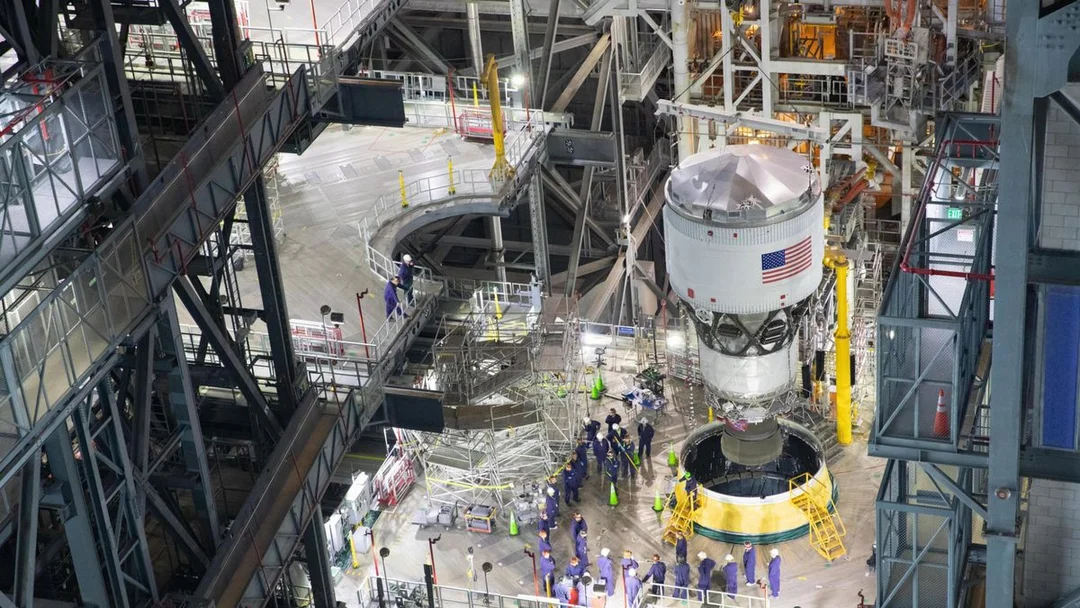
NASA’s Artemis 2 Mission Reaches Key Milestones: Rocket Assembly and Orion Spacecraft Handover Signal Progress
NASA's Artemis 2 mission, the highly anticipated crewed lunar flyby, is making significant strides toward its scheduled launch in early 2026. With engineers and astronauts alike actively preparing, the mission aims to send four individuals – NASA astronauts Reid Wiseman, Victor Glover, and Christina Koch, along with Canadian Space Agency astronaut Jeremy Hansen – on a 10-day journey around the Moon. This mission marks a pivotal moment in NASA's Artemis program, laying the groundwork for future lunar exploration and, ultimately, crewed missions to Mars. Recent developments include the successful assembly of the Space Launch System (SLS) rocket and the official handover of the Orion spacecraft to NASA.
Key Milestones Achieved:
The past few weeks have been packed with critical milestones. On May 1st, technicians successfully attached the interim cryogenic propulsion stage (ICPS) to the SLS rocket, ensuring the rocket's readiness to propel the Orion spacecraft towards the Moon. The ICPS provides 24,750 pounds of thrust. This attachment took place inside the Vehicle Assembly Building (VAB) at Kennedy Space Center in Florida.

Just two days later, on May 3rd, the completed Orion spacecraft was formally handed over to NASA by Lockheed Martin. This handover signifies the completion of Lockheed Martin's assembly and marks a significant step forward for the Artemis enterprise. NASA’s Exploration Ground Systems (EGS) program now has responsibility for Orion, which will undergo further processing, including the loading of propellant, water, and oxygen. Following this, the launch abort system will be installed before Orion is integrated with the SLS.

Preparations and Simulations:
While hardware integration proceeds, the teams responsible for launching and flying the mission are immersed in rigorous training and simulations. The launch team has completed over 30 simulations covering various scenarios, including cryogenic propellant loading and terminal countdown procedures. The crew, including the four astronauts, are participating in simulations for diverse mission scenarios, working closely with mission control teams. Early preparations include fit checks for spacesuits, testing equipment interfaces, and practicing operations within the suits.
What’s Next?
The coming months promise even more activity. The crew, flight controllers, and launch controllers will begin integrated simulations, practicing their roles collaboratively. In May, astronauts will participate in pre-launch operations at Kennedy, including emergency scenario training. The mission management team will also rehearse issue review and risk assessments. This summer, the Orion stage adapter will arrive at the VAB from Marshall Spaceflight Center to be stacked on top of the SLS rocket.
Potential Challenges and Future Considerations:
While Artemis 2 is progressing, challenges remain. Delays caused by heat shield erosion discovered during the Artemis 1 mission have pushed back the launch date. Furthermore, discussions regarding long-term alternatives to the SLS, such as commercial vehicles like Blue Origin’s New Glenn, could impact future Artemis missions. The current administration is committed to launching Artemis 3 with SLS to beat China in the race to the moon, but the situation is subject to change.
Looking Ahead:
The Artemis program represents a bold vision for renewed lunar exploration and a stepping stone to Mars. As Artemis 2 moves closer to launch, these preparations ensure that astronauts will explore the Moon while forging a path for future missions deeper into our solar system. With milestones being met and challenges being addressed, will Artemis 2 meet its launch date in 2026? Share your thoughts and predictions in the comments below!